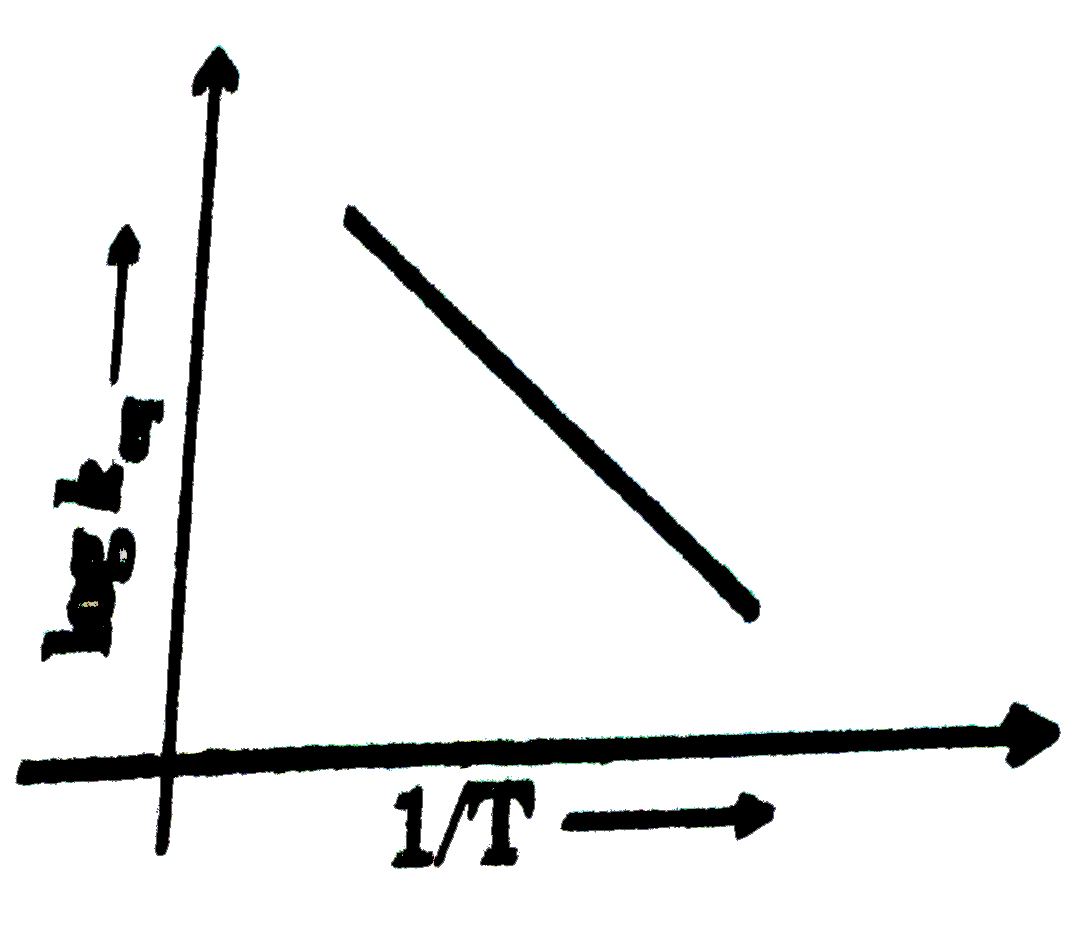CIF3 का ऊष्माक्षेपी निर्माण निम्न अभिक्रिया द्वारा प्रदर्शित किया जाता हैं-
Cl2(g)+3F2(g)<⇒2CIF3(g),ΔH=−329 किलजुल निम्न में से किस्से Cl2,F2 तथा CIF3 के साम्य मिश्रण में CIF3 की मात्रा बढ़ जाएगी?
ताप बढ़कर
Cl2 हटाकर
पात्र का आयतन बढ़ाकर
F2 मिलाकर
The correct Answer is:d
ला-शातेलिए के नियमानुसार अग्र अभिक्रिया के लिए अनुकूल-स्थितियों हैं - (1) ताप में कमी, (2) अभिकारकों की अधिक सांद्रता (3) दाब में वृद्धि
টপার এই প্রশ্নগুলো সমাধান করেছে
- रसायन विज्ञान Book:BALAJI PUBLICATIONChapter:रसायन विज्ञान Exercise:NCERT पाठ्य पुस्तक के प्रशन
Explore 73 Videos
- परिशिष्ट-3Book:BALAJI PUBLICATIONChapter:परिशिष्ट-3Exercise:उदाहरण
Explore 21 Videos
- रसायन विज्ञान की कुछ मूलभूत अवधारणाएँBook:BALAJI PUBLICATIONChapter:रसायन विज्ञान की कुछ मूलभूत अवधारणाएँExercise:पूर्णांक प्रकार के प्रश्न
Explore 4 Videos
সম্পর্কিত প্রশ্ন
एक द्रव सीलबंद पात्र में निम्नलिखित ताप पर इसके वाष्प से साथ साम्य में रखा जाता है । पात्र का आयतन अचानक बढ़ा दिया जाता है ।
(क) वाष्प - दाब परिवर्तन का प्रारंभिक परिणाम क्या होगा ?
(ख )प्रारंभ में वाष्पन एवं संघनन की दर कैसे बदलती है ?
(ग) क्या होगा , जब कि साम्य पुन : अंतिम रूप से स्थापित हो जाएगा तब अंतिम वाष्प दाब क्या होगा ?
View Solution500 मिली N10CaCO3 विलयन बनाने के लिए कितने ग्राम CaCO3 की आवश्यकता होगी?
View Solutionएक छात्र अलग-अलग ब्यूरेट से अनुमापन करता है और 25.2mL,25.25mL और 25.0mL अनुमाप मान पता है । औसत अनुमाप में सार्थक अंकों की संख्या होगी ।
View SolutionThe exothermic formation of ClF_(3) is represented by thr equation: Cl_(2)(g)+3F_(2)(g) hArr 2ClF_(3)(g), DeltaH=-329 kJ Which of the following will increase the quantity of ClF_(3) in an equilibrium mixture of Cl_(2), F_(2) , and ClF_(3) ?
View SolutionFor the reaction
2CIF3(g)↔CI2(g)+3F2(g)logKeqvs1T (where temperature is in K) curve is obtained as given. Which of the following change will increase the concentration of CI2 in an equilibrium mixture of CI2,F2 and CIF3?

View SolutionThe exothermic formation of CIF3 is represented by the equation:
CI2(g)+2F2(g)⇔2CIF3(g),ΔrH=−329J
which of the following will increase the quantity of CIF3 in an equilibrium mixture of CI2,F2andCIF3.
View SolutionThe exothermic formation of CiF_(3) is represented by the equation Cl_(2(g))+3F_(2(g))hArr2CiF_(3(g)),DeltaH=-329kJ Which of the following will increase the quantity of CiF_(3) in an equlibrium mixture of Cl_(2),F_(2)and CiF_(3)
View Solutionनिम्नलिखित में से प्रत्येक साम्य में जब आयतन बढ़ाकर दाब कम किया जाता है, तब बतलाइये की अभिक्रिया के उत्पादों के मोलों की संख्या बढ़ती है या घटती है या समान रहती है?
(a) PCl5(g)<⇒PCl3(g)+Cl2(g)
(b) CaO(s)+CO2(g)<⇒CaCO3(g)
( c) 3Fe(s)+4H2O(g)<⇒Fe3O4(s)+4H2(g)
View SolutionExothermic formation represented by equation Cl_(2(g)) + 3F_(2(g)) hArr 2ClF_(3) (g) . Delta H = - 339 KJ . Which of the following will increase the quantity of CIF_(3) in equilibrium mixture ?
View SolutionEqual moles of F2(g)andCl2(g) are introduced into a sealed container and heated to temperature T to attain the following equilibria. Cl2(g)+F2(g)⇔2C/F(g),KpI=3.2,Cl2(g)+3F2(g)⇔2CIF2(g),Kp2. If partial pressures of CIF and CIF3 at equilibria are 0.2 and 0.04 atm respectively. What is the value of Kp2 ?
View SolutionCIF3 के ऊष्माक्षेपी निर्माण को निम्न समीकरण द्वारा प्रदर्शित किया जाता है Cl2(g)+3F2(g)<2ClF3(g),ΔH=−329kJ निम्न में। से कौन Cl2,F2 तथा CIF3 के साम्य मिश्रण में CIF3 की मात्रा बढ़ायेगा
View SolutionCl_(3) and F_(2) From ClF_(3) Is an exothermic process. The equilibrium body can be displayed as follows- Cl_(2(g))+3F_(2(g)) hArr 2ClF_(3),DeltaH=-329 KJ In which of the following mixture ClF_(3) Will increase the amount of?
View SolutionGive reason for the following : F_(2) is more reactive than CIF_(3) but CIF_(3) is more reactive than Cl_(2) .
View SolutionThe exothermic formation of ClF3 is represented by thr equation:
Cl2(g)+3F2(g)⇔2ClF3(g),ΔH=−329kJ
Which of the following will increase the quantity of ClF3 in an equilibrium mixture of Cl2,F2, and ClF3?
View SolutionThe exothermic formation of ClF_(3) is represented by thr equation: Cl_(2)(g)+3F_(2)(g) hArr 2ClF_(3)(g), DeltaH=-329 kJ Which of the following will increase the quantity of ClF_(3) in an equilibrium mixture of Cl_(2), F_(2) , and ClF_(3) ?
View Solution
